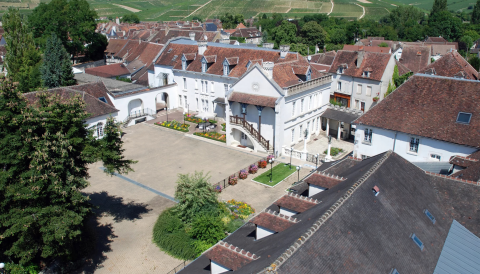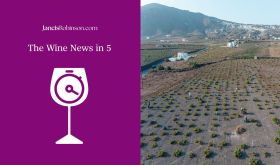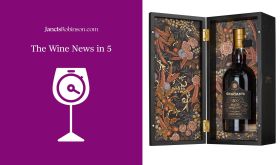First up – William Fèvre
On 10 January it was announced that Domaines Barons de Rothschild (DBR) had acquired Chablis producer William Fèvre from Artémis Domaines – the company of François Pinault.
This is the second time that William Fèvre has been sold in two years.
To give you a brief background, the company was founded in 1959 when Fèvre took over his family estate in Chablis. He sold the brand to Joseph Henriot in 1998. Henriot built a portfolio that included Fèvre, Henriot Champagne, Bouchard Père & Fils in Burgundy and Beaux Frères in Oregon. And in late 2022, Henriot sold the majority of that company to Artémis Domaines.
Within 6 months, Artémis Domaines sold Champagne Henriot to Terroirs et Vignerons de Champagne (TEVC), the group that owns Nicolas Feuillatte. They have now sold Fèvre to Domaines Barons de Rothschild … which makes me wonder if they will also sell off Beaux Frères? When managing director Frédéric Engerer commented to Wine Spectator he said, ‘We will now be able to fully concentrate on Bouchard Père & Fils and its unique collection of Côte de Beaune vineyards’. Beaux Frères was not mentioned.
For DBR and William Fèvre, the sale seems a good match. The DBR portfolio did not have a Burgundian producer or a white-wine-focused brand, so this acquisition fills a gap. William Fèvre is also in line with DBR’s environmental goals. All DBR estates are organically certified or are undergoing transition to be certified organic. William Fèvre began organic farming in 2000, implemented biodynamic practices in 2010, and is looking to have converted the entire estate property to organic by 2026.
On to sparkling wine sales
On 13 January the Comité Champagne announced that total champagne exports in 2023 were down 8.2% in volume from 2022. Some but not all of the decline in exports can be attributed to overstocking in 2021 and 2022 due to shipping issues. Domestic consumption has declined by as much as 20% according to France’s business news channel BFM. Statements from both co-presidents of the Comité Champagne imply that the decline in exports was forecasted and that they see this as the market stabilising.
But this was surprising to me as sparkling wine has been one of the few categories in the wine industry that has been doing well. So, I looked at data from Prosecco’s and Cava’s regional bodies. Prosecco Conegliano Valdobbiadene DOCG reported last November that they expected to see 10% volume decline in 2023 after reviewing data for the year. Cava experienced 2.35% growth in sales volume in the first three quarters of 2023 with 0.33% of that growth in exports. The domestic market was the biggest cause with 7.65% growth.
Overall, this is a very different picture from 2022 when the OIV reported sparkling wine sales to have grown 5% in volume globally. We can expect their April report on the state of the world’s wine industry to look a bit different this year.
On to Liv-ex
Firstly, if you aren’t familiar, the Liv-ex Fine Wine indexes track the most valuable and regularly traded wines in the world in order to show how the fine-wine world is doing. In the last decade, even if the wine industry has struggled, the fine-wine sector has done pretty well. But in 2023, the Liv-ex Fine Wine 50, 100 and 1,000 indexes (which are based upon the top traded 50, 100 and 1,000 wines) were all down from the previous year and, it was announced in December, that they are no longer outperforming financial indexes like the S&P 500.
Like sparkling wine, fine wine was a category that, until recent data started to be released from 2023, was a sector that seemed insulated from industry declines. Another factor to consider is that Burgundy, Bordeaux, Champagne and Tuscany – regions that produce the wines that regularly top Liv-ex indexes – had generous-yielding 2022 harvests – which could push prices down further. Please check out Matthew Hayes’ recent 2022 burgundy report for us, which utilises Liv-ex data to illustrate how burgundy wines have been performing in the market.
On to Argentina
Argentina has been struggling with corrupt politicians and snowballing inflation for years. In 2023, according to the EFE, the country experienced 211.4% inflation which breaks down to almost 25.5% inflation per month. When I was in Argentina in 2022, I spoke with a driver who told me that the company he worked for only adjusted employee wages quarterly. You can imagine how difficult that made it for him to pay bills.
In order to cope with this in the export market, the country has tried all manner of corrections and has often put in place special exchange rates for agricultural exports. But the country’s new president Javier Milei, elected in December, has taken a new route to correcting inflation. On his first day in office, he devalued the Argentinian peso by 50%. This was to cope with the fact that the official exchange rate of peso to dollar had the currency valued about 50% above what it was being traded for on the black market.
But he’s also begun implementing higher export taxes on industries that were previously taxed at a lower rate or not taxed – namely agriculture. The wine industry was hit with an 8% export tax.
Bodegas de Argentina, Argentina’s wine-trade body, is pushing back against the new export tax, citing the fact that wine sales are already in decline and that this tax makes the industry less competitive. Milton Kuret, executive director of Bodegas de Argentina, told Amanda Barnes reporting for The Drinks Business, ‘We really want our wines to maintain being competitive and be able to position themselves in the international markets.’
It remains to be seen whether Bodegas de Argentina will be successful in having export taxes removed.
Finally – a new series on JancisRobinson.com
On Thursday we launched Wine Boot Camp, a series from Julia Harding that will investigate various viticultural and vinification procedures. For her first article, she looked into the science behind de-alcoholisation. If you’re a current consumer of non-alcoholic wine, or a student of wine, I highly recommend you check it out.
That’s all for this episode of the wine news in five, thanks so much for listening. If you have breaking news in your area, please email me at news@jancisrobinson.com.
This is a transcript, with links embedded for further reading, of the five-minute news broadcast that Samantha Cole-Johnson, Senior Editor US for JancisRobinson.com, puts out on our Instagram page @jancisrobinson every Tuesday morning. You can also listen to it on The JancisRobinson.com Podcast.
If you'd like more like this, become a member today. Members have access to more than 250,000 tasting notes, online access to The Oxford Companion to Wine and the maps from The World Atlas of Wine, in addition to a wealth of independent, ad-free, expert editorial updated six days a week.















